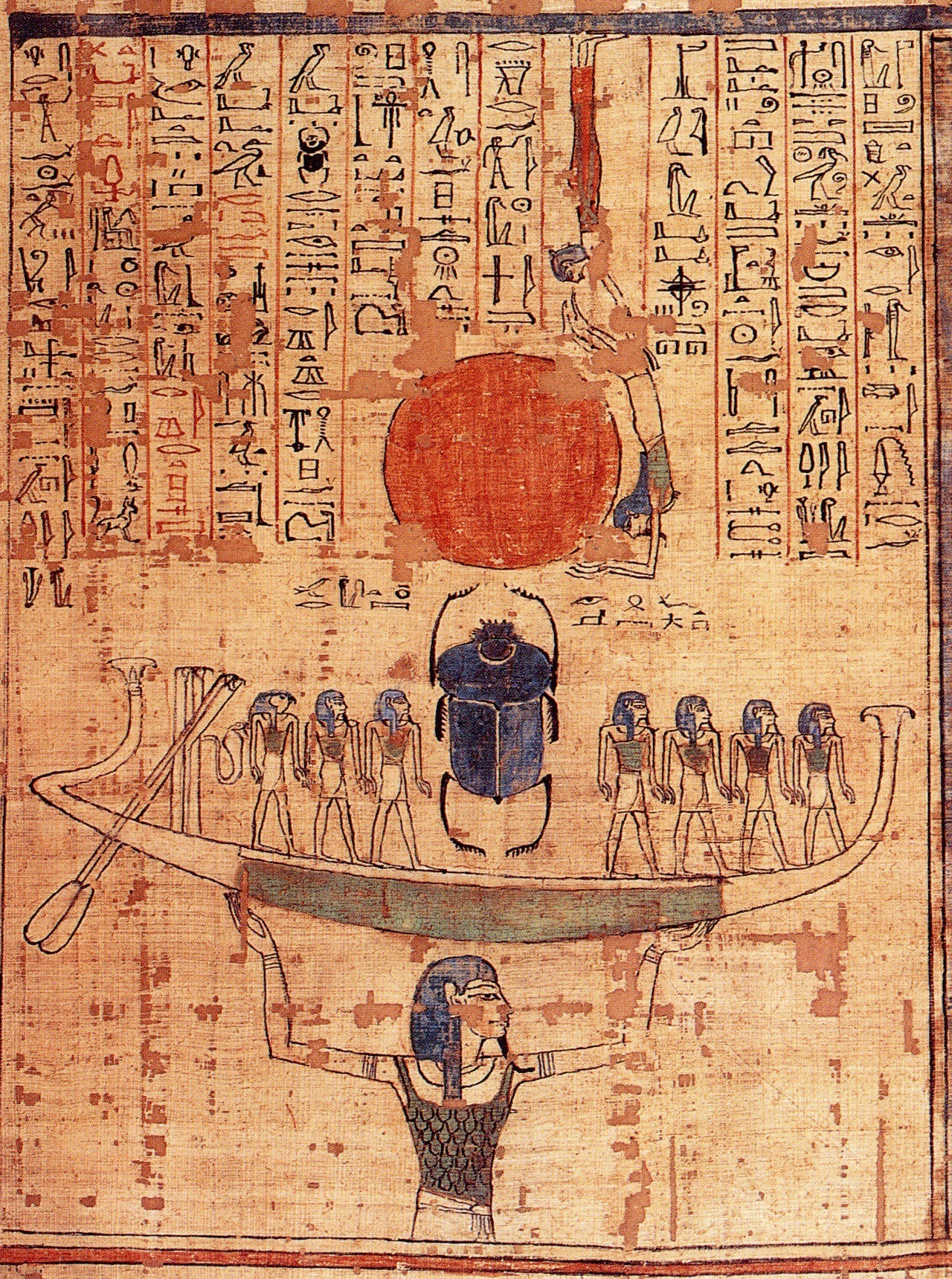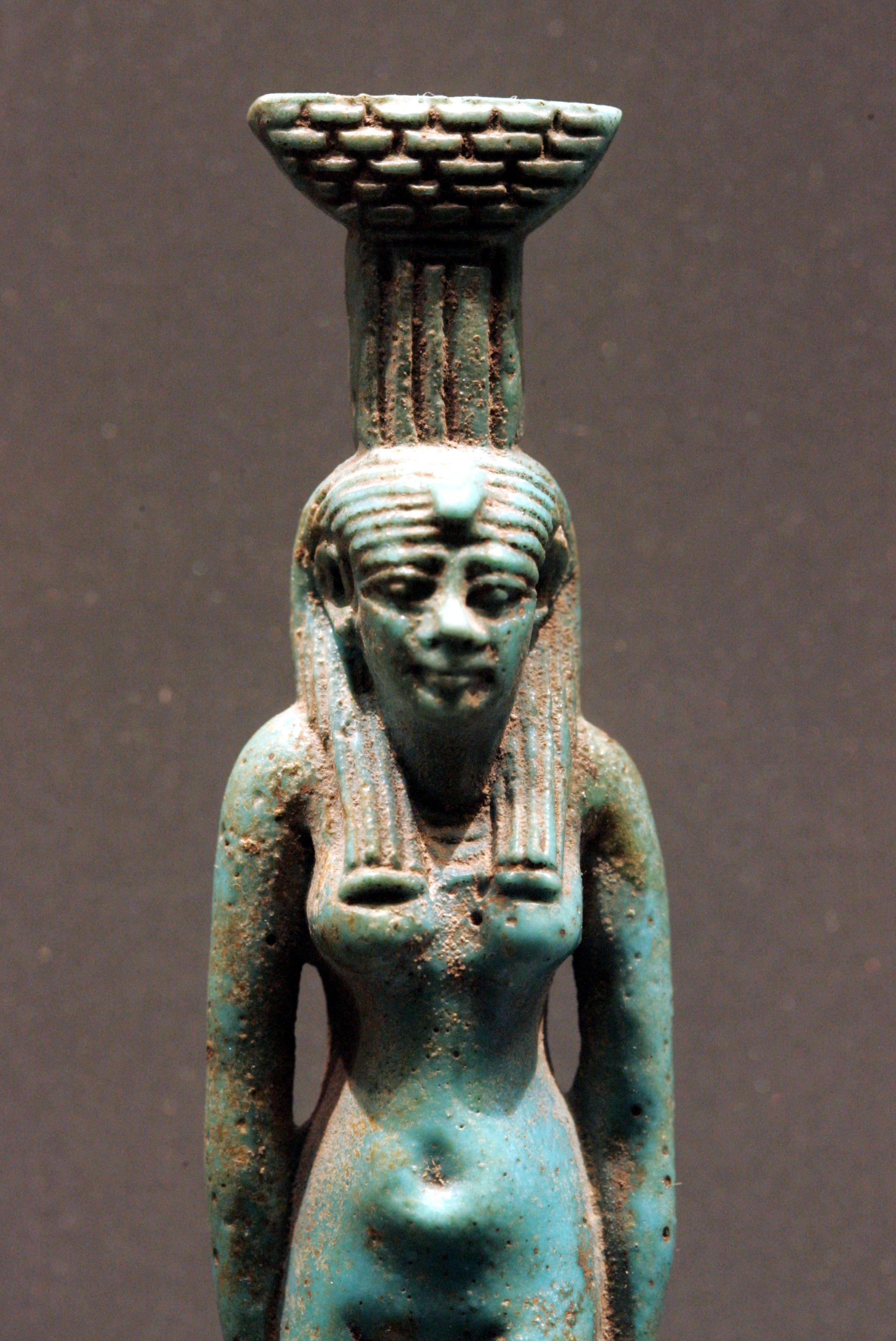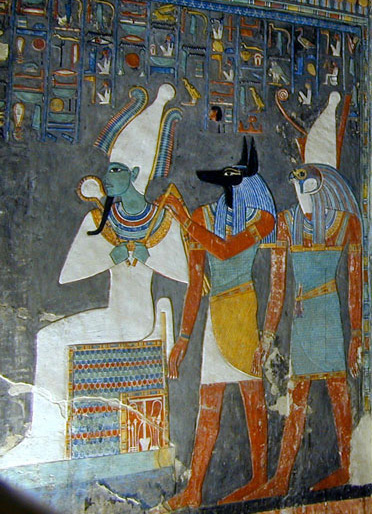|
Ennead
The Ennead or Great Ennead was a group of nine deities in Egyptian mythology worshipped at Heliopolis: the sun god Atum; his children Shu and Tefnut; their children Geb and Nut; and their children Osiris, Isis, Set, and Nephthys. The Ennead sometimes includes Horus, the son of Osiris and Isis. Status within ancient Egypt The Great Ennead was only one of several such groupings of nine deities in ancient Egypt. Its claims to preeminence by its Heliopolitan priests were not respected throughout Egypt. As close as Memphis (also within modern Cairo), the priests of Ptah celebrated him as superior to the Nine. In addition to Memphis having its own creation myth, the Ogdoad (of the city of Hermopolis) centered around physical creation and eight primordial gods was another creation story that existed at the same time. Name in Egyptian, Greek, and Latin The English name ''ennead'' is a borrowing via Latin of the Greek name ''enneás'' (), meaning "the nine". The term ... [...More Info...] [...Related Items...] OR: [Wikipedia] [Google] [Baidu] |
Egyptian Mythology
Egyptian mythology is the collection of myths from ancient Egypt, which describe the actions of the Egyptian gods as a means of understanding the world around them. The beliefs that these myths express are an important part of ancient Egyptian religion. Myths appear frequently in Egyptian writings and art, particularly in short stories and in religious material such as hymns, ritual texts, funerary texts, and temple decoration. These sources rarely contain a complete account of a myth and often describe only brief fragments. Inspired by the cycles of nature, the Egyptians saw time in the present as a series of recurring patterns, whereas the earliest periods of time were linear. Myths are set in these earliest times, and myth sets the pattern for the cycles of the present. Present events repeat the events of myth, and in doing so renew '' maat'', the fundamental order of the universe. Amongst the most important episodes from the mythic past are the creation myths, in wh ... [...More Info...] [...Related Items...] OR: [Wikipedia] [Google] [Baidu] |
Tefnut
Tefnut ( egy, ; cop, ⲧϥⲏⲛⲉ ) is a deity of moisture, moist air, dew and rain in Ancient Egyptian religion.The Routledge Dictionary of Egyptian Gods and Goddesses, George Hart She is the sister and consort of the air god Shu and the mother of Geb and Nut. Etymology The name Tefnut has no certain etymology but it may be an onomatopoeia of the sound of spitting, as Atum spits her out in some versions of the creation myth. Additionally, her name was written as a mouth spitting in late texts. Like most Egyptian deities, including her brother, Tefnut has no single ideograph or symbol. Her name in hieroglyphs consists of four single phonogram signs t-f-n-t. Although the n phonogram is a representation of waves on the surface of water, it was never used as an ideogram or determinative for the word water (''mw''), or for anything associated with water. Mythological origins Tefnut is a daughter of the solar deity Ra- Atum. Married to her twin brother Shu, she is m ... [...More Info...] [...Related Items...] OR: [Wikipedia] [Google] [Baidu] |
Isis
Isis (; ''Ēse''; ; Meroitic language, Meroitic: ''Wos''[''a''] or ''Wusa''; Phoenician language, Phoenician: 𐤀𐤎, romanized: ʾs) was a major ancient Egyptian deities, goddess in ancient Egyptian religion whose worship spread throughout the Greco-Roman world. Isis was first mentioned in the Old Kingdom () as one of the main characters of the Osiris myth, in which she resurrects her slain brother and husband, the divine king Osiris, and produces and protects his heir, Horus. She was believed to help the dead enter the ancient Egyptian afterlife beliefs, afterlife as she had helped Osiris, and she was considered the divine mother of the pharaoh, who was likened to Horus. Her maternal aid was invoked in healing Spell (paranormal), spells to benefit ordinary people. Originally, she played a limited role in royal rituals and Egyptian temple, temple rites, although she was more prominent in ancient Egyptian burial customs, funerary practices and magical texts. She was usually ... [...More Info...] [...Related Items...] OR: [Wikipedia] [Google] [Baidu] |
Nephthys
Nephthys or Nebet-Het in ancient Egyptian ( grc-gre, Νέφθυς) was a goddess in ancient Egyptian religion. A member of the Great Ennead of Heliopolis in Egyptian mythology, she was a daughter of Nut and Geb. Nephthys was typically paired with her sister Isis in funerary ritesAbeer El-Shahawbooks.google.co.uk''The funerary art of Ancient Egypt: a bridge to the realm of the hereafter'' (106 pages) American University in Cairo Press, 2005 etrieved 2011-12-12/ref> because of their role as protectors of the mummy and the god Osiris and as the sister-wife of Set. She was associated with mourning, the night/darkness, service (specifically temples), childbirth, the dead, protection, magic, health, embalming, and beer. Etymology Nephthys is the Greek form of an epithet (transliterated as ''Nebet-hut'', ''Nebet-het'', ''Nebt-het'', from Egyptian ''nbt-ḥwt''). The origin of the goddess Nephthys is unclear but the literal translation of her name is usually given as ''Lady o ... [...More Info...] [...Related Items...] OR: [Wikipedia] [Google] [Baidu] |
Egyptian Pantheon
Ancient Egyptian deities are the gods and goddesses worshipped in ancient Egypt. The beliefs and rituals surrounding these gods formed the core of ancient Egyptian religion, which emerged sometime in prehistory. Deities represented natural forces and phenomena, and the Egyptians supported and appeased them through offerings and rituals so that these forces would continue to function according to ''maat'', or divine order. After the founding of the Egyptian state around 3100 BC, the authority to perform these tasks was controlled by the pharaoh, who claimed to be the gods' representative and managed the temples where the rituals were carried out. The gods' complex characteristics were expressed in myths and in intricate relationships between deities: family ties, loose groups and hierarchies, and combinations of separate gods into one. Deities' diverse appearances in art—as animals, humans, objects, and combinations of different forms—also alluded, through symbol ... [...More Info...] [...Related Items...] OR: [Wikipedia] [Google] [Baidu] |
Shu (Egyptian Deity) Shu ( Egyptian ''šw'', "emptiness" or "he who rises up", cop, Ϣⲟⲩ) was one of the primordial Egyptian gods, spouse and brother to the goddess Te |





